Is Europe still affordable in 2026? It’s the #1 question I get. With inflation hitting popular hubs like Paris and Rome, travelers are rightfully worried about their wallets. But after exploring the continent for over a decade, I can tell you: the budget-friendly Europe you’re looking for still exists…you just have to know where to look.
Over the past 10 years, I’ve visited 40 European countries, tracking price changes from the Balkans to the Baltic. Based on my recent trips and current economic data, I’ve ranked the most affordable cities that don’t sacrifice culture for cost.
How I Selected & Ranked These Cities (2026 Criteria)
With inflation changing prices across Europe weekly, I wanted to ensure this list is accurate for the 2025-2026 travel season. Here is my ranking methodology:
- Real-World Experience: I have personally visited 20 of the 23 cities listed below. For the few I haven’t visited recently, I interviewed local travel guides in late 2025 to verify costs.
- The “$50 Benchmark”: To make this list, a traveler must be able to survive comfortably on $50 USD (approx. €47) per day or less. This includes a dorm bed/budget Airbnb, transportation, and three meals. Also, I factored in tourist tax.
- Safety & Stability: “Cheap” doesn’t matter if it isn’t safe. I have cross-referenced these cities with the latest US State Department travel advisories.
Now that we’ve established the ground rules, here is the one tool I use to actually get to these cities for cheap…
- MY PRO TIP: Why pay full price for flights to Europe when you don’t have to? Going.com (formerly Scott’s Cheap Flights) is my favorite tool for finding flight deals and discounts. I save thousands each year using it, including most recently a $299 roundtrip fare from Boston! 💸 Best part – it’s 100% free to use. To find the cheapest flight deals to Europe in 2026, I recommend signing up for the 14-day free trial for the Premium Version.
23 Cheapest Cities in Europe You Need to Visit
The medieval gem of Poland’s Krakow, the charming old town of Latvia’s Riga, and the fairytale town of Czech Republic’s Český Krumlov are among the most affordable European cities for traveling and living. The rich history of Albania’s Berat and the coastal towns of Portugal’s Porto are also wallet-friendly gems of Europe.
Ready to feed your wanderlust and discover the cheapest places in Europe? Let’s dive into Europe’s lesser-known hidden gems.
| City | “Best For” | Daily Budget Est. |
|---|---|---|
| Kraków, Poland | History & Nightlife | $32-$45 |
| Riga, Latvia | Architecture Lovers | $39-$97 |
| Český Krumlov, Czechia | Fairytale Vibes | $38-$87 |
| Berat, Albania | Off-the-Path Adventure | $23-$66 |
| Porto, Portugal | Wine & Coast | $43-$58 |
| Belgrade, Serbia | Party & Cafe Culture | $34-$49 |
| Athens, Greece | Ancient History | $43-$58 |
| Budapest, Hungary | Spas & Romantic Views | $46-$58 |
| Ljubljana, Slovenia | Green/Eco Travel | $44-$54 |
| Warsaw, Poland | Museums & Modern History | $42-$61 |
| Sevilla, Spain | Food & Flameneco | $49-$62 |
| Sofia, Bulgaria | Mountain Views & History | $42-$56 |
| Valletta, Malta | Island History | $57-$97 |
| Bologna, Italy | Foodies (Pasta!) | $53-$64 |
| Bratislava, Slovakia | Relaxed Sightseeing | $39-$52 |
| Dresden, Germany | Classic Art & Baroque | $51-$67 |
| Split, Croatia | Beaches & Roman Ruins | $38-$53 |
| Tallinn, Estonia | Digital Nomads/Tech | $44-$56 |
| Bucharest, Romania | Nightlife & Architecture | $41-$53 |
| Prague, Czechia | Beer & Gothic Charm | $46-$59 |
| Kotor, Montenegro | Hiking & Fiords | $39-$81 |
| Plovdiv, Bulgaria | Ancient Ruins & Art | $43-$90 |
| *Estimates include budget accommodation (hostel/Airbnb) + 3 inexpensive meals. | ||

1. Kraków, Poland
The prices for accommodations, meals, and attractions in Kraków are a fraction of what you’d pay in other major European cities. Kraków is also very walkable, so you won’t need to spend any money on public transportation to get around.
My Personal Budget Tip: Skip the restaurants on the Main Market Square. Instead, head two streets over to a “Bar Mleczny” (Milk Bar). These are cafeteria-style canteens from the communist era where I got a full plate of pierogi and soup for under $6 USD. It’s authentic and unbeatable value.

Kraków honestly blew me away with how much you get for your money. The Polish currency, the złoty, has a very favorable exchange rate to the US Dollar and Euro, which means your money goes way further here than almost anywhere else in Europe. I spent three days here and barely cracked $45 per day, including accommodation, meals, and attractions.
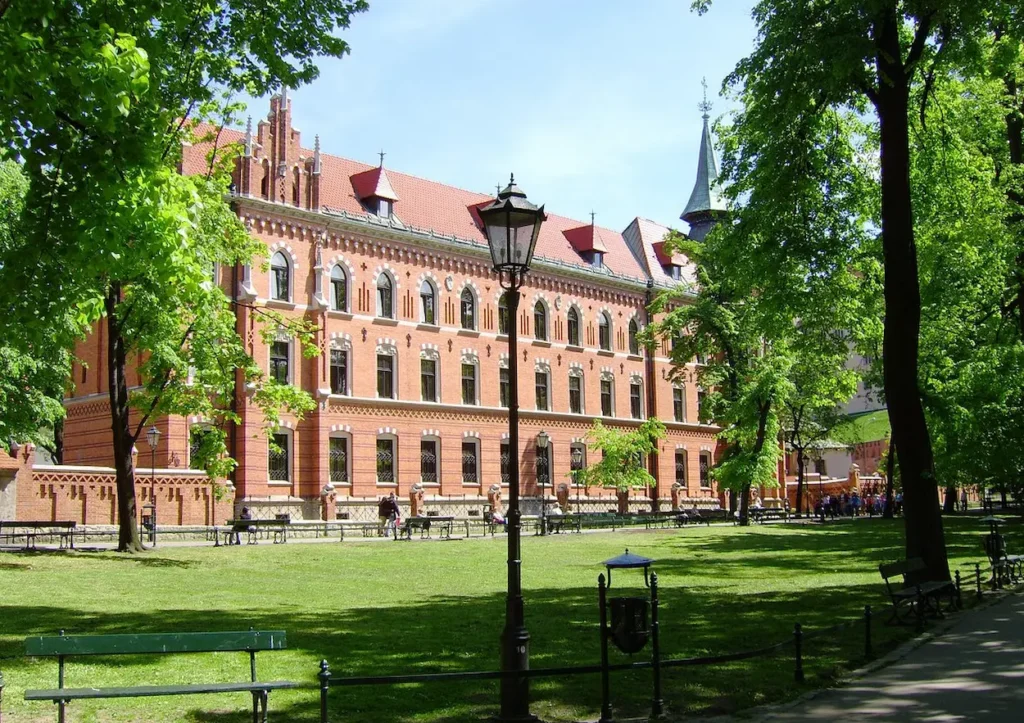
The city’s Main Market Square (“Rynek Główny“) is the largest medieval square in Europe, and it’s completely free to wander around. Horse-drawn carriages glide past colorful buildings and the slightly imperfect St. Mary’s Basilica – I actually love that it looks a bit lopsided. The atmosphere here at sunset is pretty magical.

Wawel Castle is the real showstopper though. Entry to the castle grounds is completely free, which most people don’t realize. You can walk around the complex, enjoy the views, and soak up the history without spending a dime. If you want to go inside the state rooms, it’s about 53 PLN ($13) for the main tour, or you can get the combined ticket for 89 PLN ($22) to see both floors. The Dragon’s Den underneath costs just 9 PLN ($2.25) and is actually pretty fun, especially the fire-breathing dragon sculpture by the river.
I stayed in a fantastic hostel in the Old Town for about $15 per night, and traditional Polish meals at local restaurants rarely cost more than $8-12. Kraków rivals Prague’s medieval charm but doesn’t draw nearly the same crowds or prices.
- Read next: Most Beautiful Castles in the World

2. Riga, Latvia
According to recent cost studies, Riga offers one of the most affordable costs of living in Northern Europe, with reasonably priced accommodation, inexpensive public transportation, and budget-friendly dining options.
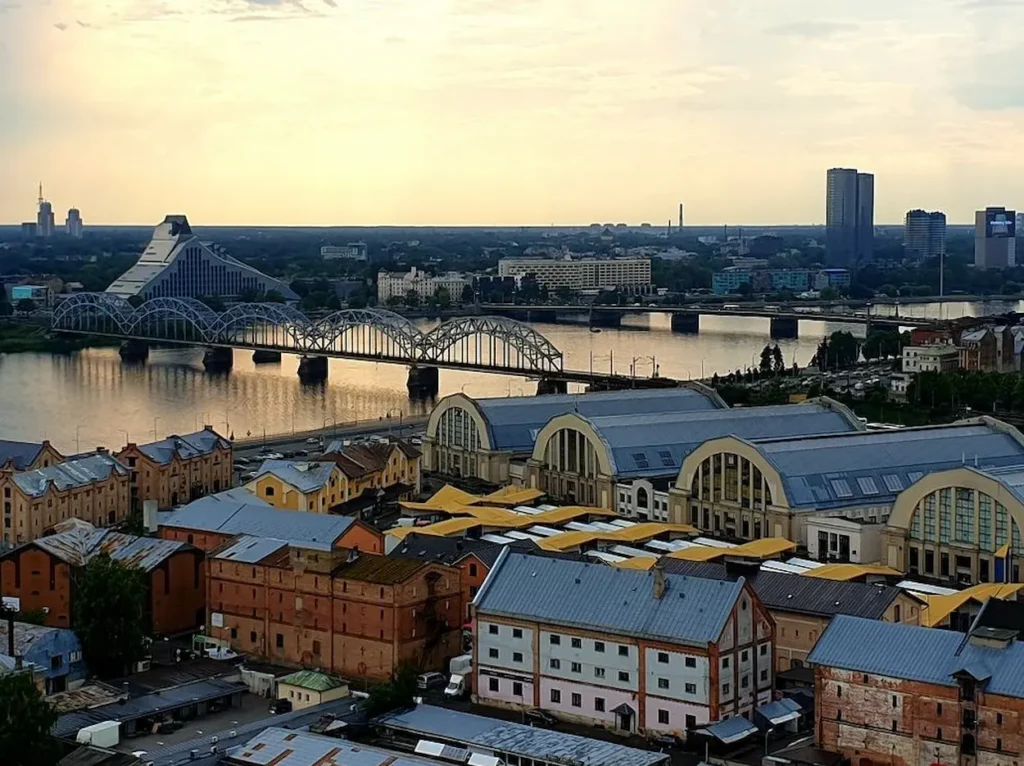
Living in Riga is incredibly affordable, especially compared to other European capitals. I found that a good meal for two at a mid-range restaurant costs around $30-40, and a pint of domestic beer is usually under $3. The city actually surprised me with how much there is to see and do without breaking the bank.
The Old Town is a UNESCO World Heritage Site with charming medieval architecture that you can explore completely for free. St. Peter’s Church is the real highlight – for 9 euros, you can take an elevator up the 72-meter tower for absolutely stunning panoramic views of the city. Some people complain it’s pricey, but honestly, it’s the best view in Riga and worth every cent.
I spent hours wandering the Art Nouveau district (the Quiet Center), which has some of the most beautiful early 20th-century architecture I’ve seen anywhere. The Riga Central Market is free to browse and perfect for cheap, fresh food – plus it’s housed in these cool old Zeppelin hangars from WWI.
You can easily get by on $40-50 per day here if you’re smart about it. I stayed in a decent hostel for around $25 per night and ate most meals at local spots that cost $5-8. Public transport is super cheap too – just $1.20 for a single ride.
3. Český Krumlov, Czech Republic
Český Krumlov’s affordable accommodation and dining options make it a budget-friendly choice for travelers. This town looks like it’s been ripped straight from a fairytale, and the best part is you can experience it all without spending a fortune.

I visited Český Krumlov on a day trip from Prague, but honestly, I wish I’d stayed longer. While many wars ravaged surrounding cities, this place experienced centuries of peace, which is why everything looks so perfectly preserved. The sheer number of well-preserved buildings from centuries past is incredible.
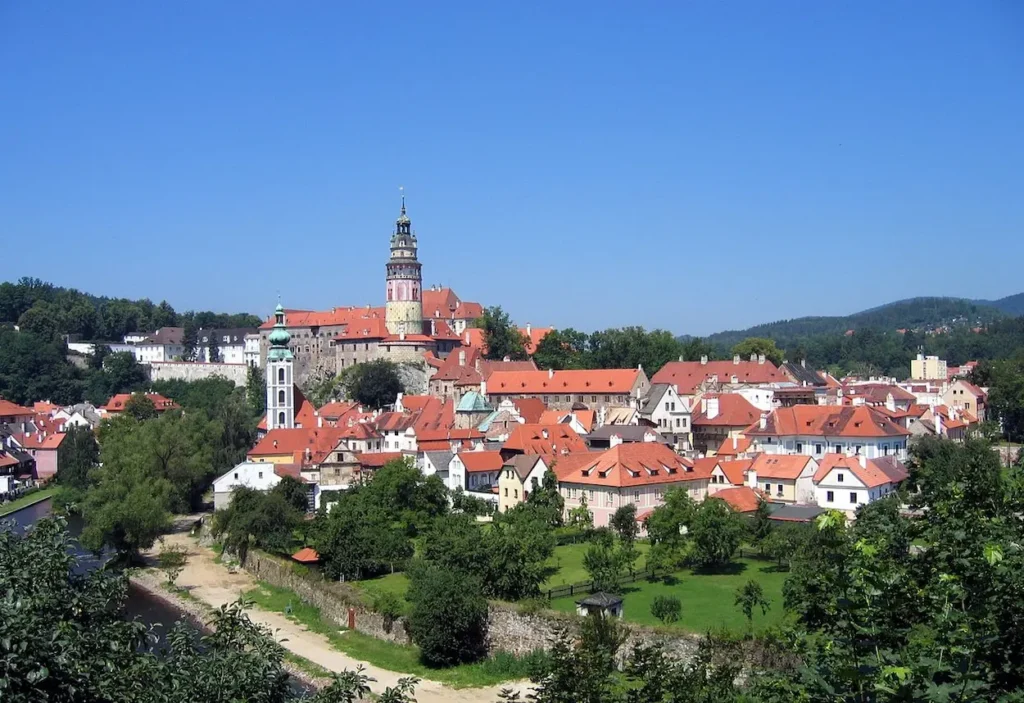
The 13th-century castle towers over the historic center and costs about 250 CZK ($11) for the main tour. The views from up there are absolutely worth it – you get panoramic shots of the winding Vltava River and all those gorgeous red rooftops. I spent most of my time just wandering the cobblestone streets though, which costs nothing and is honestly the best way to experience the place.

The town is tiny, so you can easily walk everywhere. I grabbed lunch at a local spot overlooking the river for about 150 CZK ($7), and the portions were huge. Beer here is ridiculously cheap – like $2 for a pint of excellent Czech beer. You can sit outside at a café with views of the castle and river, eating traditional Czech food and drinking great beer, all for under $15.
Budget hotels here run about $25-35 per night, and if you visit during shoulder season (April-May or September-October), you’ll get even better deals on accommodation and fewer crowds.

4. Berat, Albania
Also called “The City of a Thousand Windows,” Berat has some of the lowest prices for accommodation, food, and attractions in all of Europe. I’m talking about restaurant meals for $3-5 and decent guesthouses for $15-20 per night.
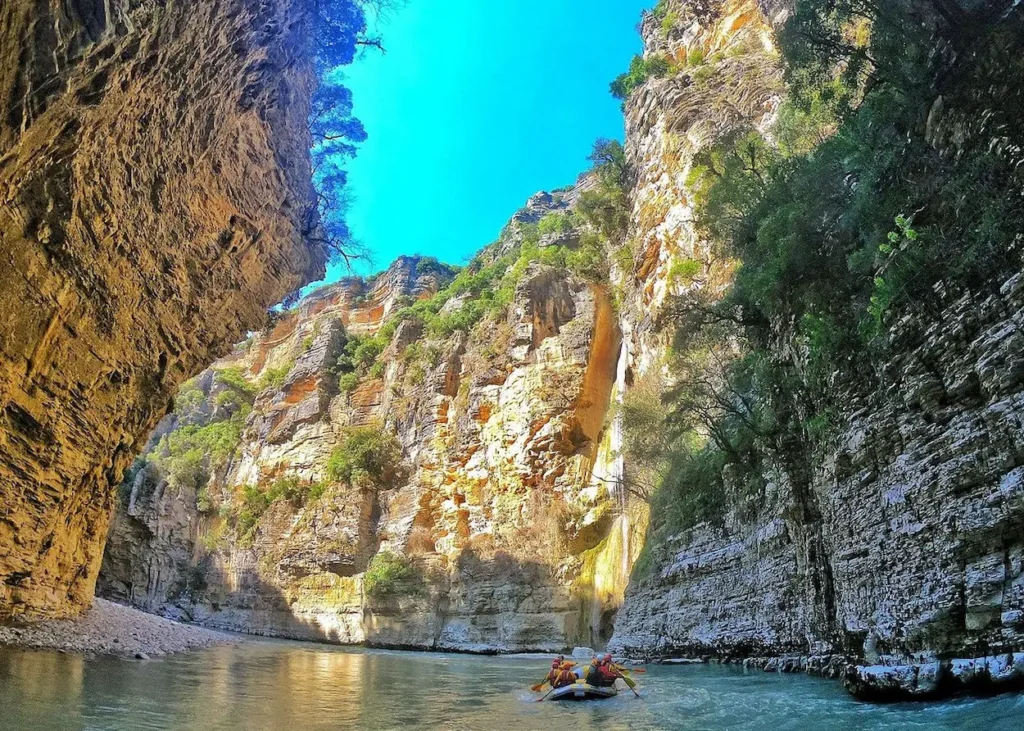
Berat can be explored on a shoestring budget, and honestly, it’s one of those places where being budget-conscious actually makes the experience better. You’ll stay in family-run guesthouses where the owners treat you like family, eat at tiny local restaurants where you’re the only tourist, and have authentic experiences that cost almost nothing.
Berat Castle is a well-preserved Ottoman fortress that offers stunning views of the city and surrounding landscapes for just a few euros. The Iconography Museum, housed in a 13th-century church, features an impressive collection of religious icons and costs maybe $2 to enter. The Onufri National Museum showcases remarkable Byzantine-style frescoes for another small entrance fee.
I spent three days in Berat and my total budget was under $25 per day, including accommodation. Bus transportation within the city costs $1-2 per ride, and you can walk to most attractions anyway. The historic quarters of Mangalem and Gorica are free to explore, and honestly, just wandering these neighborhoods and photographing the traditional Albanian architecture was one of my favorite travel experiences.
The local cuisine is delicious and incredibly affordable – I had amazing traditional meals with meat, vegetables, bread, and salad for $4-6 consistently.
5. Porto, Portugal
Looking to experience Iberia on a budget? Porto is probably the cheapest Western European city you can visit, and you could easily get by on $50 a day while still experiencing everything the city has to offer.
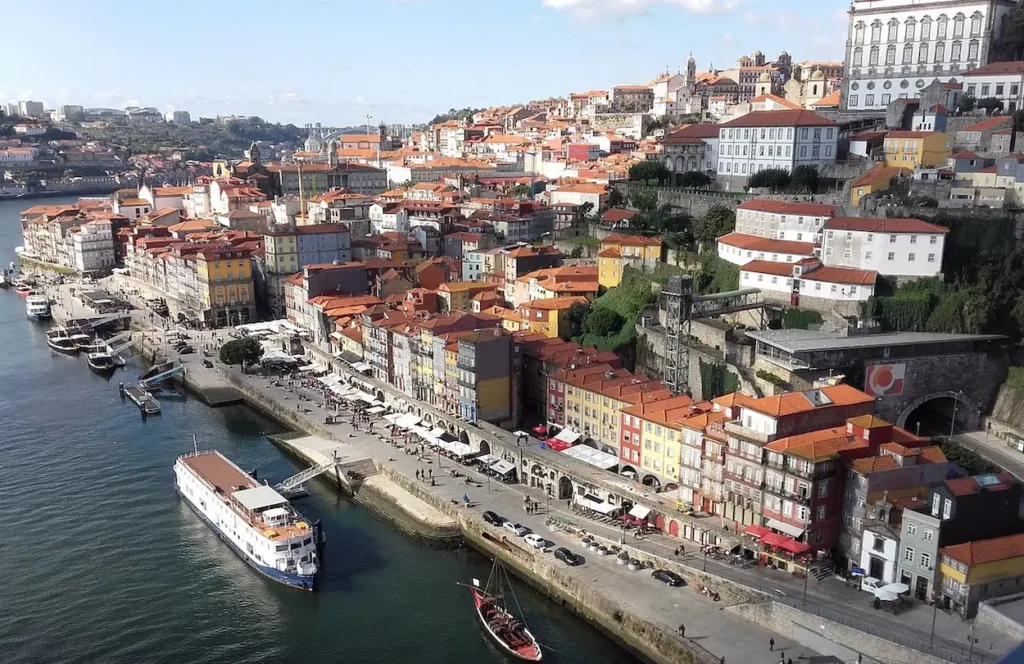
Porto is often compared to Lisbon, but it’s way less touristy and significantly cheaper. I found the city way more interesting and authentic than the capital. Known for its port wine, Porto is the gateway to the Douro Valley, one of the world’s top wine regions, but you don’t need to leave the city to experience great wine.

The port wine cellars in Vila Nova de Gaia (just across the Luis I Bridge) offer tours and tastings starting from just 14-17 euros. I went to Graham’s and Sandeman – the tour at Graham’s was way better and included tastings of three different ports with detailed explanations. Burmester is right at the foot of the bridge and super convenient if you’re staying in Porto.
The Ribeira district is completely free to explore and absolutely gorgeous. Those colorful houses lining the riverside look like a postcard, and you can spend hours just wandering the narrow streets and taking photos. The Luis I Bridge offers stunning views of the city for free – just walk across on either the upper or lower level.

I stayed in a decent Airbnb in the city center for about $25 per night, and meals at local tascas (traditional Portuguese taverns) cost $8-12 for generous portions. The Porto Cathedral is free to visit, and just walking around the historic center costs nothing but gives you incredible architecture and atmosphere.
Visit during spring (March-May) or fall (September-November) for the best deals on flights and accommodation.
- Read next: Best Wine Regions in the World

6. Belgrade, Serbia
Belgrade is honestly one of the most underrated cities in Europe, and it’s incredibly affordable. Whether you’re into history, culture, food, or nightlife, Belgrade delivers without breaking the bank.
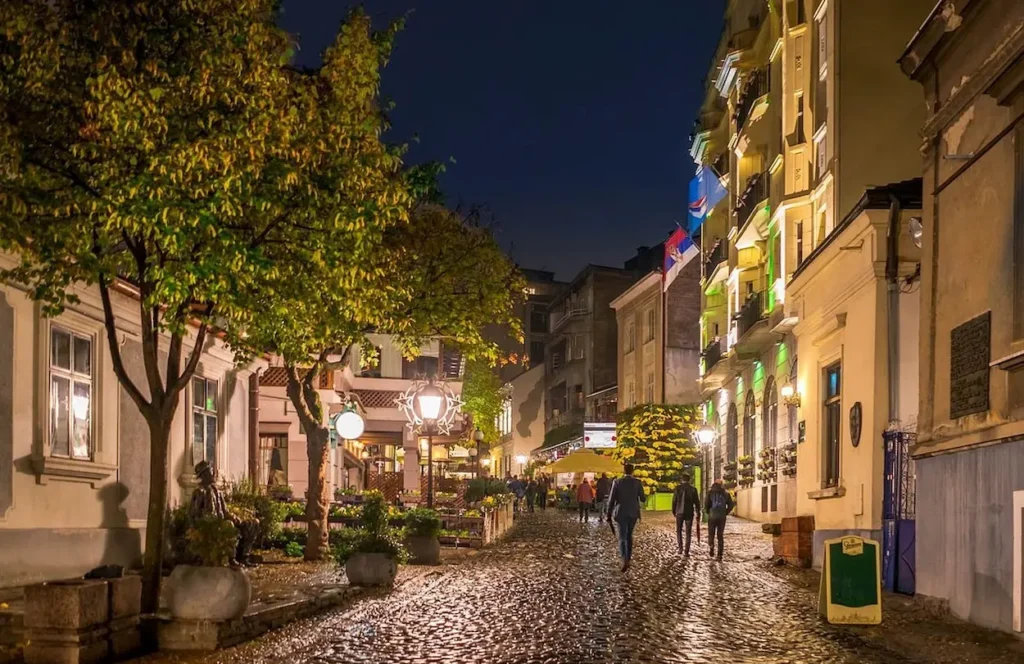
I was blown away by Belgrade‘s location at the confluence of the Sava and Danube rivers. The waterfront views are beautiful, and you can take boat tours or river cruises for very reasonable prices. The city has this awesome energy that I wasn’t expecting.

Kalemegdan Fortress offers stunning views of the city and rivers, and it’s completely free to explore. St. Sava Temple is one of the largest Orthodox churches in the world and costs nothing to visit – the interior is absolutely massive and impressive. I spent most of my time just walking around these historic sites and enjoying the riverside areas.
The food scene here is incredible and so cheap. Traditional Serbian cuisine is hearty and delicious, and you can get a full meal at local restaurants for $5-8. The nightlife is legendary too – Belgrade has some of the best clubs and bars in Europe, and drinks are a fraction of what you’d pay in Western Europe.
I stayed in a great hostel in the city center for $12 per night, and even nicer accommodation rarely goes above $30-40. Public transport is super affordable, but honestly, most attractions are walkable from the center.

7. Athens, Greece
As the capital of ancient and modern Greece, Athens is home to some of the world’s oldest temples, statues, and monuments, and it’s one of the cheapest European cities to fly into and visit.

Athens totally exceeded my expectations. I thought it would be just ancient ruins and touristy crowds, but there’s so much more to see and do here. The Acropolis and Parthenon are obviously must-sees, and at 20 euros for the combined ticket, it’s actually pretty reasonable considering what you’re seeing. From the top of the Acropolis, you get sweeping views of the entire city sprawling below.
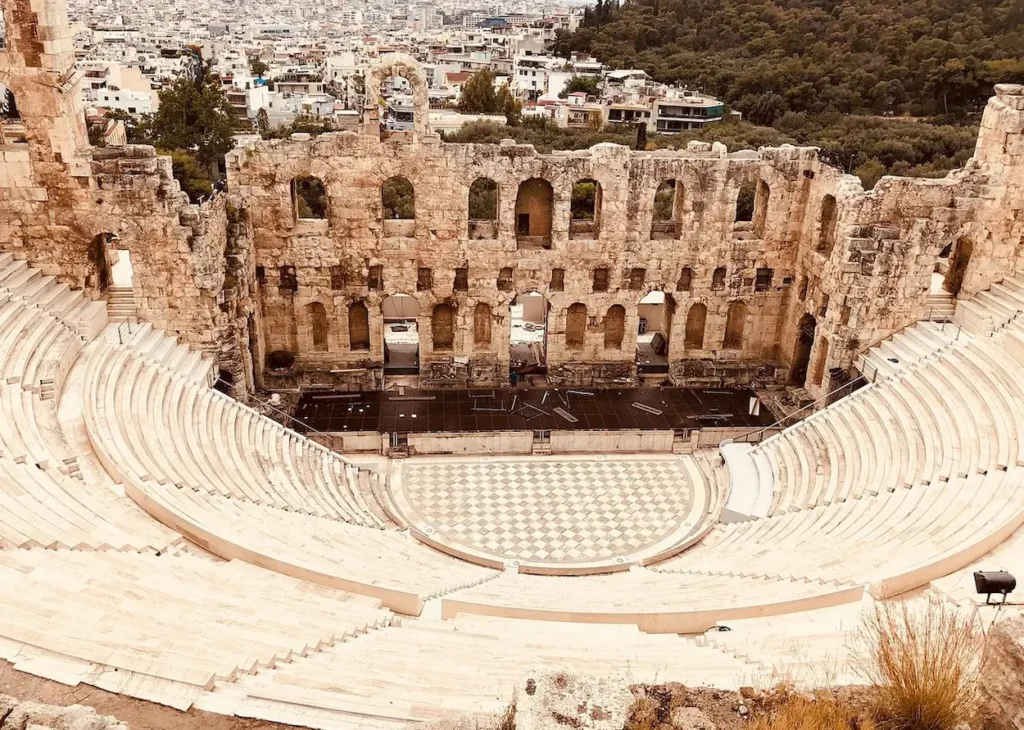
The Agora and Temple of Zeus are included in various combo tickets, which saves money if you’re planning to see multiple sites. The Panathenaic Stadium where they held Olympic Games in 1896 and 2004 is really cool – I actually ran a couple laps around the track, which you can do for free.

I stayed in the Plaka neighborhood, which was perfectly located and safe. You can find decent hostels here for $15-20 per night, and the area is full of affordable tavernas where you can get traditional Greek food for $8-12. Gyros from street vendors cost just $3-4 and are honestly some of the best food in the city.
The best part about Athens is that you can visit many attractions during free admission hours or get discounted student prices. Walking around the historic neighborhoods costs nothing and gives you a real feel for modern Greek life alongside all the ancient history.

8. Budapest, Hungary
Budapest is one of Europe’s cheapest and most romantic cities. I took a budget airline here and was amazed by how much the city offers for so little money.
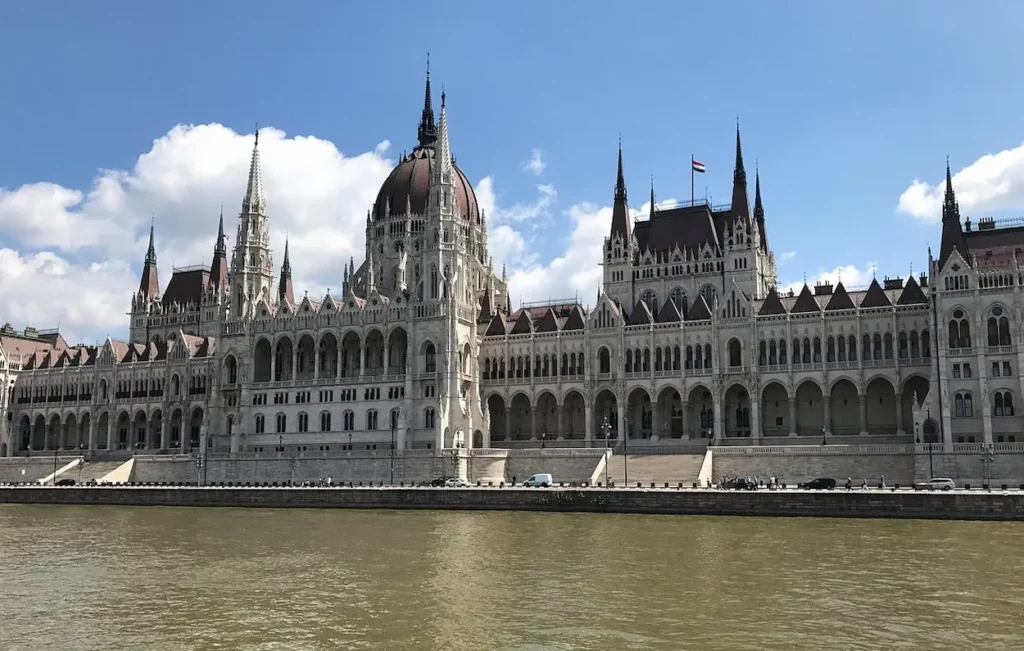
Budapest is gracefully split by the Danube River with Buda (the hilly, historic side) and Pest (the flat, vibrant side). The city is famous for its thermal baths, which have been popular since Roman times. Széchenyi Thermal Bath is the largest medicinal bath in Europe, and while it’s gotten more expensive recently (around 5,800 HUF or $15 for a full day), it’s still an incredible experience.

I spent hours in the outdoor thermal pools even in winter – there’s something magical about soaking in hot spring water while snow falls around you. The Rudas Baths and Gellért Thermal Bath are also excellent options, often less crowded than Széchenyi.
The architecture here is stunning. The Hungarian Parliament Building and Buda Castle are absolutely massive and watch over the scenic waterfront. Fisherman’s Bastion gives you the best bird’s-eye views of the Danube and the rest of the city – it costs about 1,000 HUF ($2.50) to access the upper levels, but you can get great views from the lower areas for free.

Hungarian cuisine is some of the best in Central Europe. Goulash, lángos (fried flatbread), and halászlé (fisherman’s soup) are all delicious and cheap. I found great meals for $6-10 consistently. Beer is incredibly affordable too – often under $2 for a pint.
Accommodation is very reasonable. I stayed in an awesome hostel for about $18 per night, and even nice hotels rarely exceed $50-60 per night.

9. Ljubljana, Slovenia
Despite being one of the most livable European cities, Ljubljana somehow managed to stay under the radar, making it perfect for budget travelers who want a high quality experience.
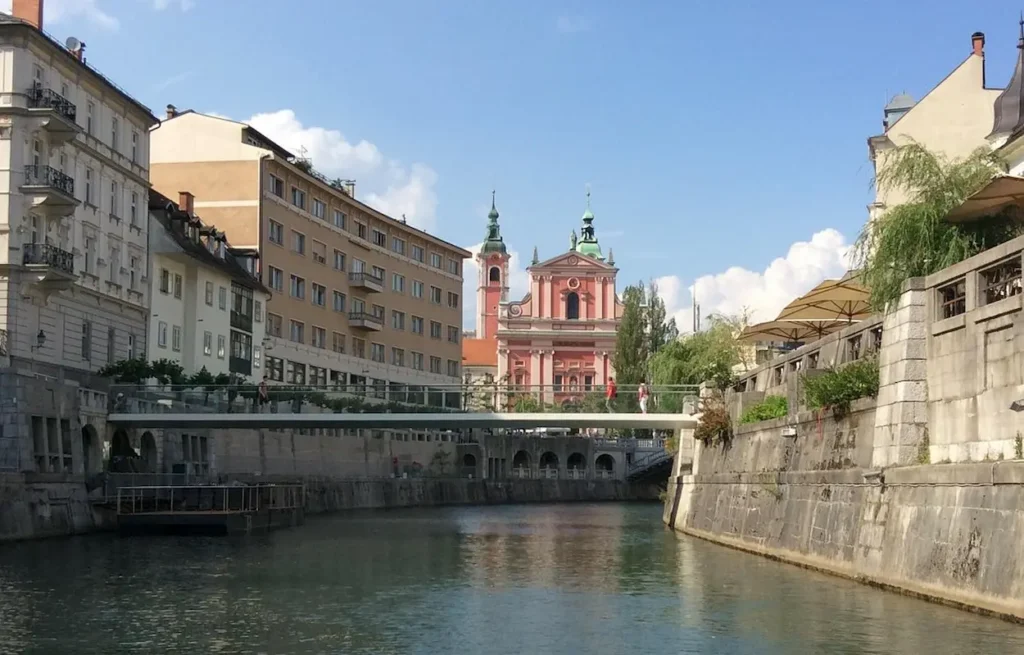
Ljubljana has this amazing reputation as a green, pedestrian-friendly city. The Old Town has been car-free since 2008, which makes it incredibly pleasant to walk around. In 2016, it was named the European Commission’s Green Capital of Europe, and you can really feel the difference.

Ljubljana Castle sits high above the colorful city and offers great views. You can hike up for free or take the funicular for a small fee. The Triple Bridge (Tromostovje) and Ljubljana Cathedral are beautiful examples of the city’s mix of architectural styles. During summer, many restaurants and cafés set up along the Ljubljana River, creating this lively outdoor dining scene.
I found Ljubljana incredibly affordable compared to other Western European capitals. A decent hostel costs $20-25 per night, and meals at trendy restaurants along the river cost $8-12. Slovenia has great wine too, and you can get quality local wines for very reasonable prices.
The city is compact and walkable, so you don’t need to spend money on transport. Many of the main attractions like the outdoor markets and riverside promenades are free to enjoy. I visited in late September and the weather was perfect, plus accommodation rates were lower than summer peak season.

10. Warsaw, Poland
Warsaw is a hidden gem for budget travelers. This vibrant city is filled with history, culture, and plenty of affordable activities that won’t break the bank.
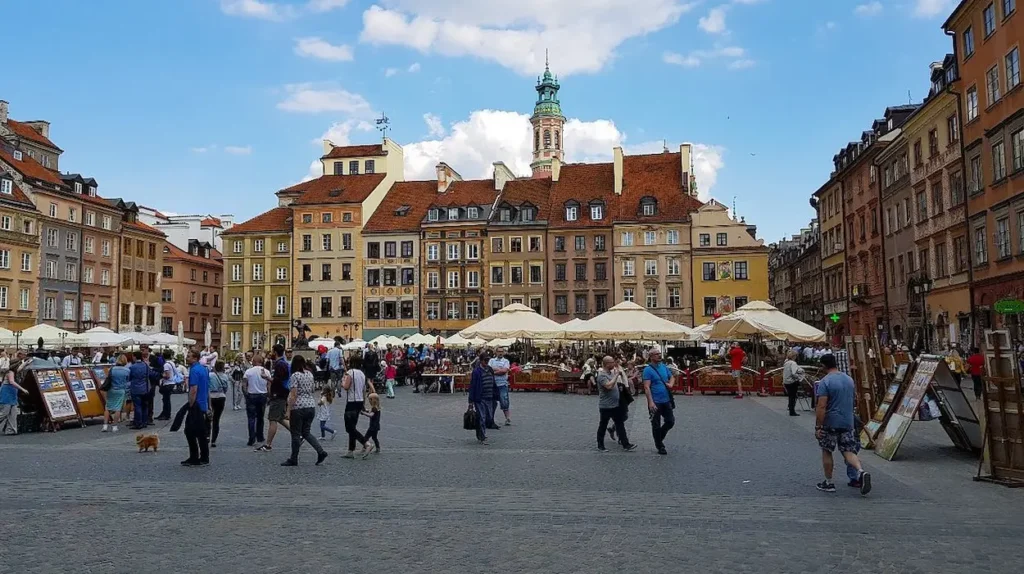
Warsaw has undergone massive changes over the years, and this shows in the variety of architectural styles throughout the city. From stunning medieval reconstruction in the Old Town to colorful, modern buildings, there’s always something interesting to discover. The Old Town was completely rebuilt after WWII and honestly looks amazing – those colorful facades are perfect for photos.

The food scene here is incredible and so affordable. You can get traditional Polish cuisine like pierogi, kielbasa, and bigos for $5-8 at local restaurants. International food is everywhere too, and everything’s budget-friendly. I had some of the best meals of my European trip here for under $10.
Warsaw has a thriving music and arts scene. The nightlife is fantastic with affordable drinks and cover charges – you can party all night without spending more than $20-25. There are tons of free cultural events, concerts, and festivals happening throughout the year.
I stayed in a great hostel in the city center for about $15 per night. Public transport is cheap and efficient, but honestly, most of the main attractions are walkable. The Royal Castle and Market Square are the main tourist spots, but I actually preferred just wandering the different neighborhoods and seeing how locals live.
Visit during spring (April-May) or fall (September-October) for the best weather and lowest prices.
- Read next: Most Beautiful Castles in the World

11. Seville, Spain
While Sevilla is generally much cheaper than Barcelona and Madrid, it has all the perks of a large city with incredibly rich culture. As one of the biggest cities in Spain, Seville is also one of the cheapest European cities to fly into.
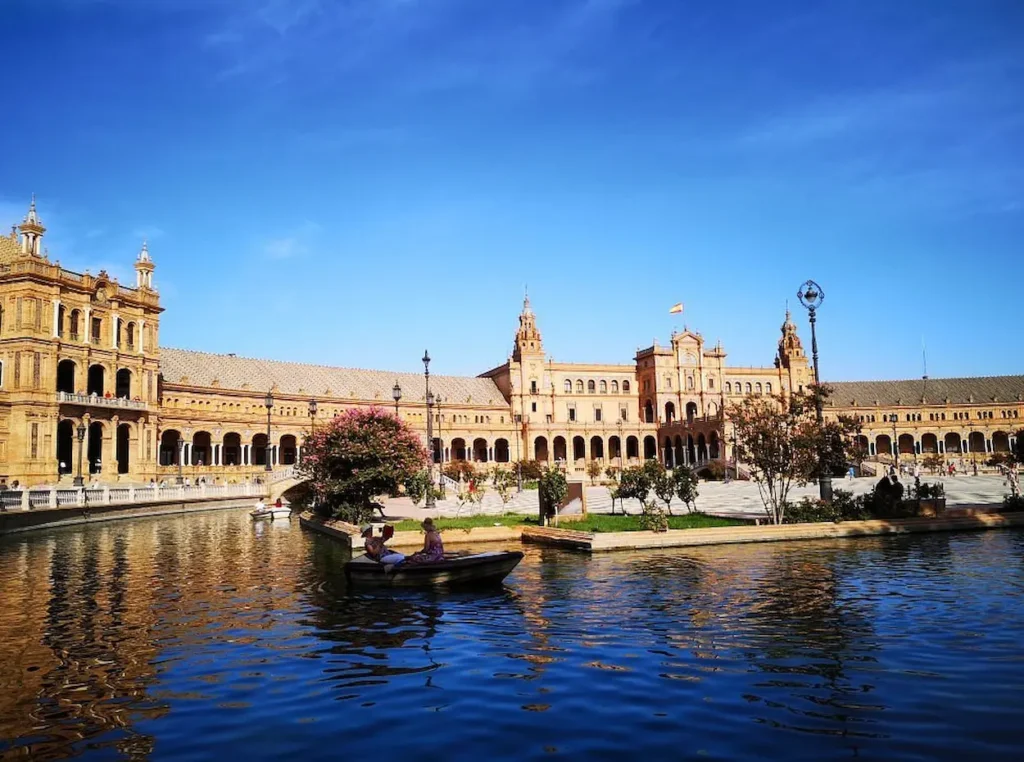
Like most of Andalusia, food and drinks here cost a fraction of what you’d pay in other Spanish cities. The key is venturing off the beaten path to find the best tapas spots – avoid the touristy areas around the cathedral and you’ll find amazing food for $4-6 per meal.

Seville is home to some incredible historic landmarks. The Real Alcázar is a royal palace with this amazing mix of Islamic, Gothic, Renaissance, and Baroque architecture. It’s about 13 euros to enter, which is reasonable for such an extensive complex. The Plaza de España is one of the most beautiful squares in Europe and completely free to visit – it was built for an exposition in 1929 and makes you feel like you’re in the Old World.
I visited during off-season and found great accommodation deals. You can get decent hostels for $18-25 per night, and even nice hotels are very affordable compared to northern Spanish cities. The weather is fantastic almost year-round, so you can always enjoy sitting outside at cafés and restaurants.
The Seville Cathedral is massive and impressive, though the entrance fee is around 12 euros. Honestly, the city is so beautiful that just walking around the historic neighborhoods and along the Guadalquivir River is entertainment enough.

12. Sofia, Bulgaria
Sofia is one of the most underrated European destinations right now. It’s slowly making its way onto “Best of Europe” lists but has still remained under the radar, which means great prices for travelers.
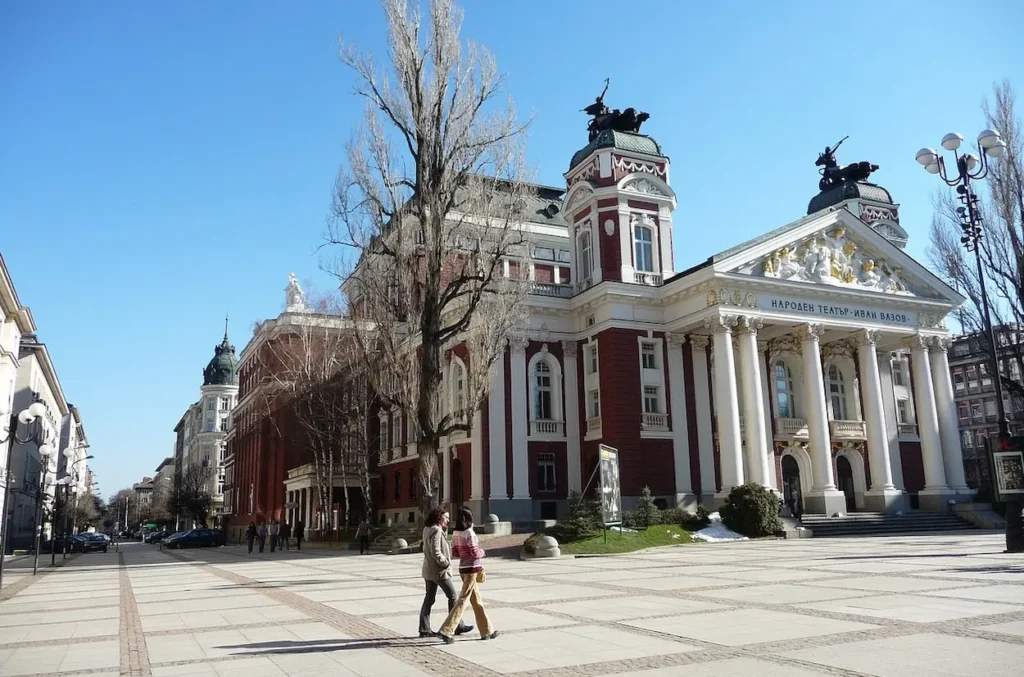
The city has incredible ancient architecture, especially in its religious buildings. Boyana Church is a Bulgarian Orthodox church and UNESCO World Heritage Site with beautiful frescoes dating back to the 1100s. The Banya Bashi Mosque, built in the mid-1500s under Ottoman rule, is also worth seeing.

Alexander Nevsky Cathedral is the real showstopper though – this massive neo-Byzantine cathedral with its gold dome dominates the city center. It’s free to enter and absolutely stunning inside. The surrounding area has lots of cafés and restaurants where you can eat traditional Bulgarian food for $5-8.
I found Sofia incredibly affordable across the board. Accommodation ranges from $15-25 per night for decent hostels, and even nice hotels are under $50. Public transportation is cheap and efficient – you can get around the city for under $1 per ride.
The food here is similar to what you’d find in Istanbul and other eastern European destinations – lots of grilled meats, fresh vegetables, and hearty stews. Local restaurants offer generous portions for very reasonable prices, and the local beer is excellent and cheap.
Sofia also has great day trip opportunities to monasteries and mountains that are very affordable on public transport or budget tour companies.
- Read next: Most Beautiful Places in Bulgaria

13. Valletta, Malta
Valletta provides the opportunity to explore historic charm and cultural attractions at relatively low prices. This miniature city makes you feel like you’ve stepped back in time – the entire city is encapsulated by walls dating back to the 1500s.

Although it’s one of Europe’s best budget destinations, you won’t find many tourists here outside of peak summer season. The city is only 1 km by 600m, making it incredibly compact compared to other European capitals. You can walk the entire city in a couple hours, which means no transport costs.

I visited during shoulder season and found great deals on accommodation. You can get decent places for $30-40 per night, and flights from mainland Europe are often surprisingly cheap, especially if you’re flexible with dates. The local Maltese cuisine is delicious and affordable – fresh seafood, traditional pastries, and Mediterranean-influenced dishes for reasonable prices.
The streets of Valletta are gorgeous for photography, and most of the historic architecture and Baroque buildings are free to admire. You can take a ferry to nearby islands for day trips without spending too much. Mdina, the old capital, is a short bus ride away and feels like a medieval movie set.
Malta has beautiful beaches and crystal-clear water, plus the weather is fantastic most of the year. You can easily have an amazing Mediterranean vacation here for a fraction of what you’d spend in more popular destinations.

14. Lviv, Ukraine
⚠️ 2026 Travel Advisory: Due to the ongoing conflict in Ukraine, tourism is currently restricted and potentially dangerous. I have kept Lviv on this list to highlight its beauty and encourage you to visit once peace returns. Please check your government’s travel advisories before planning any trip here.
Situated in western Ukraine, Lviv is a gorgeous yet cheap city to visit in Europe. It has the charm of cities like Prague without the crowds that come with them. Unlike the Soviet-looking cities around the country, it offers a unique blend of Central and Eastern European architectural styles.

With many hotels and hostels to accommodate visitors, Lviv is a prime Ukrainian city for tourism. The prices are also incredibly cheap, especially when compared to Western and Central Europe.
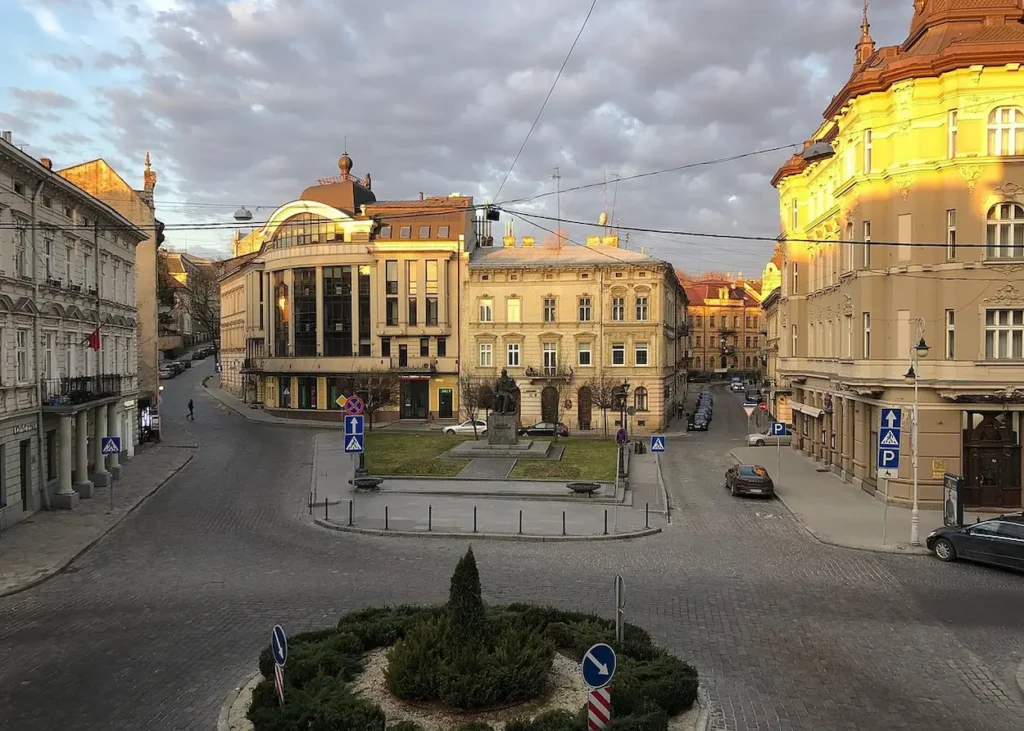
Lviv is top among the cheapest European cities to visit. Here’s why:
- Explore the city’s historic center on foot and indulge in the local cuisine at affordable cafes and restaurants.
- Visit the many churches and museums offering discounted or free admission.
- Take in the stunning views of the city center from an old-fashioned tram. Stop in one of the 1,500 cafés sprawled around the city.
With its relaxed old town, fairytale vibe, and unbeatable prices, it’s no wonder Lviv is among the most affordable European cities.

15. Bologna, Italy
It only felt right to include Italy on this list of the cheapest places in Europe. Bologna is one of Italy’s lesser-known gems that deserves way more attention, and it’s significantly more affordable than Florence or Venice.

Bologna is tucked between Florence and Venice but offers a much more authentic Italian experience without the crowds and inflated prices. The Piazza Maggiore and Basilica di San Petronio date back to the Italian Renaissance and are free to explore. The medieval center is among the largest and best preserved in all of Europe, with gorgeous pastel-colored buildings and tons of life.
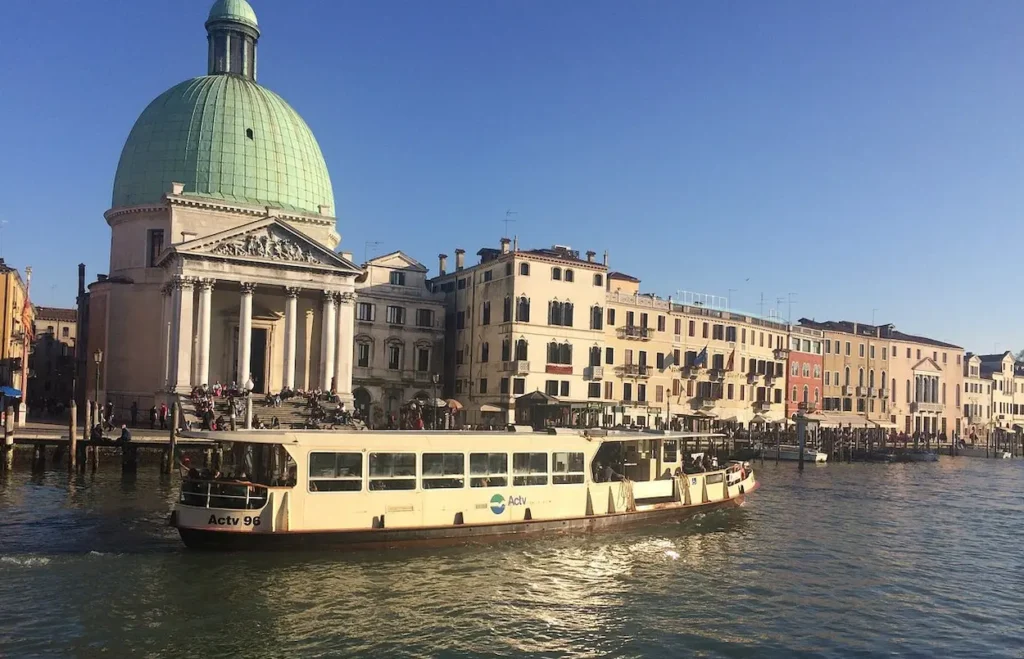
The Asinelli Tower is Bologna’s famous leaning tower – it’s actually taller and leans more than the Leaning Tower of Pisa, but costs way less to climb (about 5 euros). The views from the top are fantastic, and you get bragging rights for climbing the tallest leaning tower in Italy.

Bologna is considered a UNESCO Creative City of Music, and you can catch performances at historic venues like the Teatro Comunale for very reasonable prices. But honestly, the best part of Bologna is the food scene. This is where Bolognese sauce originated, and you can get incredible pasta dishes for $8-12 at local trattorias.
I stayed in a great hostel for about $28 per night, and even during peak season, accommodation is much more affordable than other Italian cities. The covered markets are perfect for cheap, fresh ingredients if you want to cook, and the local wine is excellent and inexpensive.
Visit during off-season for the best deals – I went in November and had beautiful weather, smaller crowds, and great prices.
- Read next: Top Day Trip Ideas from Bologna

16. Bratislava, Slovakia
Bratislava is perhaps the hottest emerging destination in Central Europe, and it’s only an hour by train from Vienna. Yet it’s miraculously managed to evade the crowds so far, which means authentic experiences and great prices.
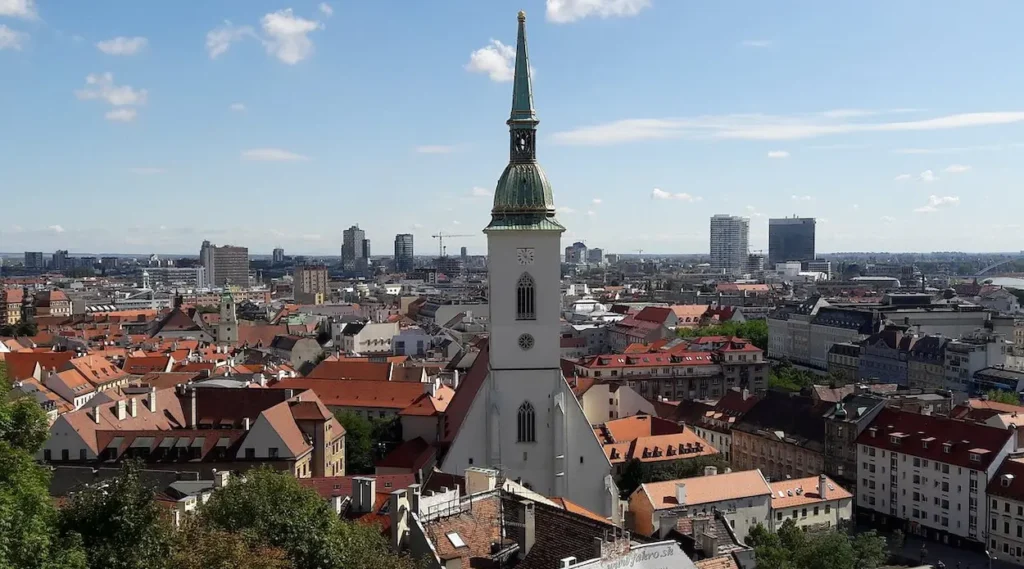
Bratislava isn’t the biggest or most glamorous city, but what it lacks in size, it makes up for with medieval charm and Gothic character. From the Danube River, you can see different slices of the city’s wide-ranging past – from fairytale-colored buildings to bleak Communist-era structures that remind you of Slovakia’s complex history.

The Old Town is perfect for exploring on foot. Quaint churches, shops, and cafés line narrow cobblestone lanes. The main square is surrounded by colorful baroque buildings and outdoor restaurants. Bratislava Castle sits high above the city and offers great views – you can hike up for free or pay a small fee to tour the interior.

I found Bratislava incredibly affordable. Decent hostels cost $18-25 per night, and traditional Slovak meals at local restaurants cost $6-10. Beer is ridiculously cheap – often under $2 for excellent local brews. You can sit at outdoor cafés overlooking the Danube and enjoy great food and drinks for very little money.
The city is small enough to walk everywhere, so no transport costs. Many attractions are free or very cheap to enter. It’s also a great base for day trips to nearby castles and wine regions.
- Read next: Most Livable Cities in the World
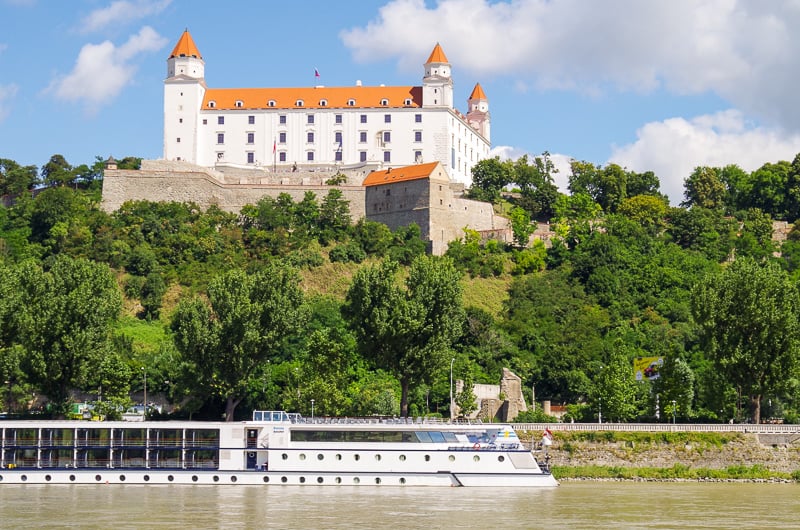
17. Dresden, Germany
Even during peak tourist seasons, Dresden offers reasonable prices, making it one of the most affordable cities in Germany for travelers.

Dresden is known for its classic architecture, world-class museums, and scenic setting along the Elbe River. When you’re standing at the riverbank, you can spot a striking resemblance between the Augustus Bridge and Florence‘s Ponte Vecchio.

Zwinger is a palace-turned-museum built in the early 1700s and is among the finest examples of German Baroque architecture. Entry costs about 12 euros and includes access to multiple museum collections. The Frauenkirche is a beautiful Lutheran church that’s free to visit – it was completely destroyed in WWII and meticulously rebuilt.
I took a steamboat down the Elbe River to Saxon Switzerland National Park, which is highly recommended. The Bastei Bridge rock formations are accessible by train, bus, or boat from Dresden and offer incredible hiking and views for very little money.

Dresden has great accommodation options across all price ranges. I stayed in a decent hostel for about $25 per night, and even during summer, prices are reasonable compared to other German cities. Local restaurants serve traditional Saxon cuisine for $10-15, and the local beer scene is excellent.
Visit during shoulder seasons (March-May or October-November) for the best deals, though even peak season prices are manageable.
- Read next: Top Vacation Homes in Germany

18. Split, Croatia
Split offers excellent value for travelers with reasonably priced accommodation, inexpensive dining options, and low-cost attractions. This beautiful port city is often overshadowed by Dubrovnik, but it has an incredible personality of its own and costs way less.

Split is built around Diocletian’s Palace, a remarkably well-preserved Roman complex from over 1,700 years ago. Much of the city lies within the former palatial walls, filled with over 200 buildings, shops, restaurants, and hotels. The white stone walls create this mystical atmosphere that makes you feel like you’re back in ancient times.

The Saint Domnius Cathedral is one of the most iconic sights in the palace complex. The Riva waterfront promenade slightly resembles the Promenade des Anglais in Nice, and the picturesque harbor makes you wonder why Split hasn’t been overrun by tourists yet.

I did a culinary walking tour that was fantastic value – Split has the oldest fish market in Europe, and you get to taste local Adriatic specialties like sting rays, squid, and mussels. Fresh seafood here is incredible and much cheaper than you’d find in Western Europe.
Accommodation is very reasonable. I found great apartments for $30-40 per night, and even during summer, prices are manageable. Local restaurants serve generous portions of fresh seafood and traditional Croatian dishes for $8-12. The local wine is excellent and inexpensive too.

19. Tallinn, Estonia
With low prices and high diversity, Tallinn is considered by many to be the “Silicon Valley of Europe.” It’s also a great place to begin your European budget travel adventure.
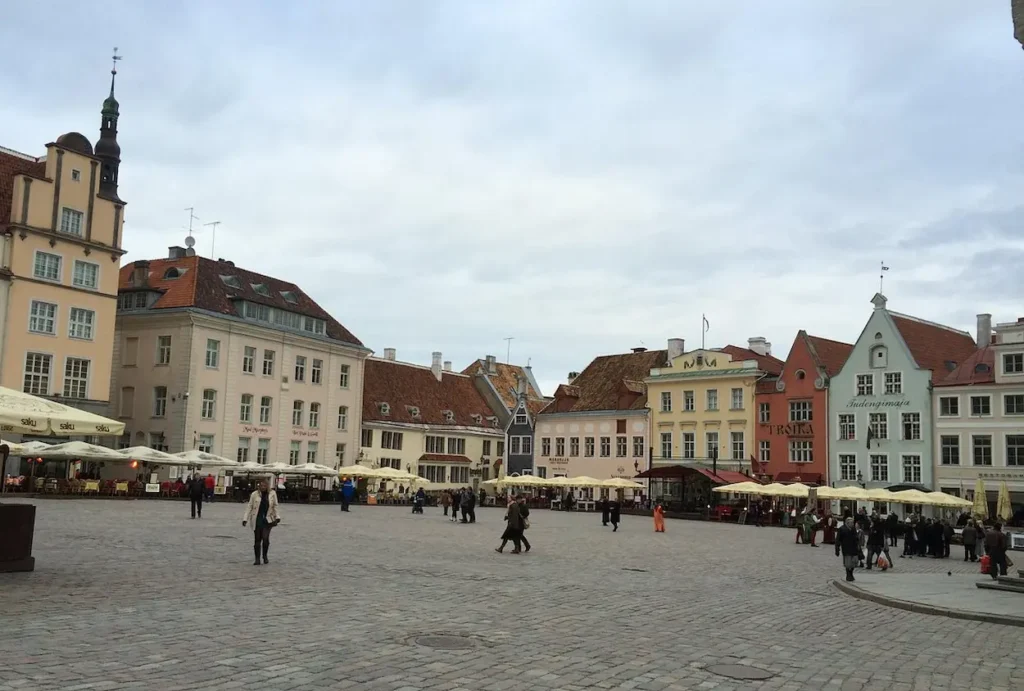
Tallinn is small but mighty with its rich culture and history. The city was occupied by many foreign powers over the centuries – Soviets, Germans, Swedes, and Danes – which gives it this amazing eclectic character you see today.

The walled Old Town is extraordinarily well preserved and vibrant. Many top sights date back to the 13th century, including the Gothic Town Hall, St. Mary’s Cathedral, St. Nicholas’ Church, and Toompea Castle. The entire Old Town is a UNESCO World Heritage Site and feels like an open-air museum.
I found Tallinn very affordable. Decent hostels cost $22-28 per night, and traditional Estonian food is hearty and cheap. Local restaurants serve generous portions for $8-12. The local beer scene is excellent, and drinks are very reasonably priced.
Whether you’re stopping briefly on a Baltic cruise or spending more time exploring, your euros go a long way in Tallinn. Many attractions are free or very cheap, and the compact Old Town means no transport costs. The medieval atmosphere is incredible, and it’s definitely one of the most photogenic cities in Europe.
- Read next: Must-Visit Spots in the Baltic Region

20. Bucharest, Romania
This is probably the cheapest destination on this list, but it has so much to offer. For such a big city with over 1.8 million people, Bucharest has laid low for too long and offers incredible value.
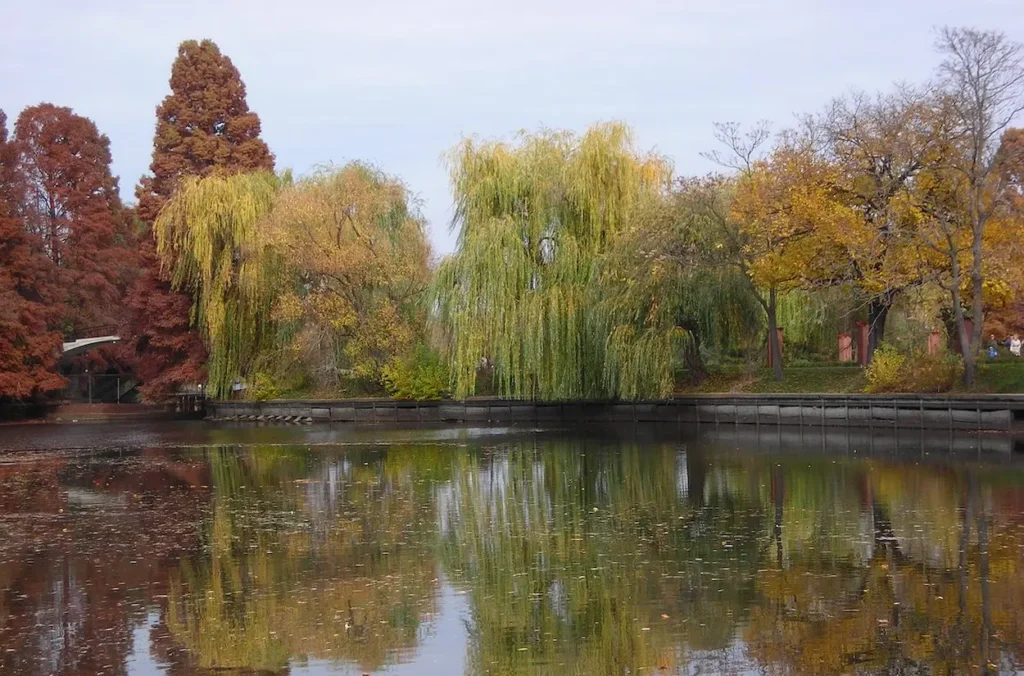
Bucharest is probably the most modern city on this list, though in a fascinating way. Many streets are lined with Communist-era buildings from the late 20th century, creating this austere picture of the city’s not-so-distant past.

The Palace of Parliament is the most striking reminder of this era. It’s not the prettiest building, but it’s certainly one of the biggest – with 12 floors and 1,100 rooms, it’s the second-largest building in the world after the Pentagon. Tours cost about 45 lei ($10) and are actually pretty interesting.
Other popular sights include the Romanian Athenaeum, Dimitrie Gusti National Village Museum, and King Michael I Park. Bucharest is also a great launching point for exploring other cultural and natural gems around Romania.
I found Bucharest incredibly affordable. Hostels cost $12-18 per night, and even nice hotels are under $40. Restaurant meals cost $5-8 for generous portions, and local beer is excellent and cheap. Public transport is very affordable, though most central attractions are walkable.

21. Prague, Czech Republic
While Prague might not be the dirt-cheap city it once was, it still offers great value for money and is considered one of the best places for students and budget travelers in Europe.

Prague is a bustling, culturally rich city in the heart of Central Europe. It’s been influenced by powerful empires including Austria-Hungary, Bohemia, and the Holy Roman Empire, all of which left their mark on this remarkably well-preserved city.
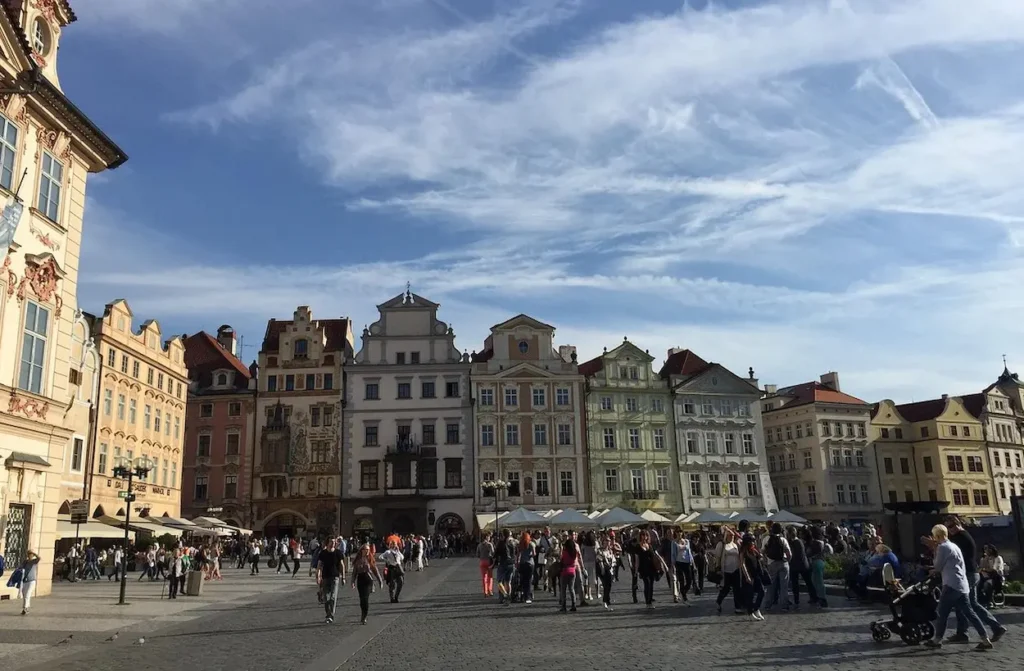
Prague‘s Old Town Square is the historic center, jam-packed with Baroque buildings, colorful churches, and the world’s oldest Astronomical Clock (built in 1402). The Charles Bridge is a 14th-century Gothic stone bridge connecting the Old Town with the Lesser Town. Prague Castle is a UNESCO World Heritage Site and the largest “coherent castle complex” in the world.

I found Prague still quite affordable if you’re smart about where you eat and stay. Avoid the touristy restaurants right around the main attractions and head to local pubs and restaurants where you can get traditional Czech food for $6-10. Czech beer is world-famous and incredibly cheap – often $2-3 for excellent local brews.

Accommodation has gotten more expensive, but you can still find decent hostels for $25-35 per night. Many attractions offer student discounts, and just walking around the historic center and crossing the famous bridges costs nothing but provides hours of entertainment.

22. Kotor, Montenegro
Kotor is a budget-friendly coastal destination that offers a unique blend of historical charm and natural beauty. Local restaurants and cafés serve delicious Montenegrin cuisine at very affordable prices.
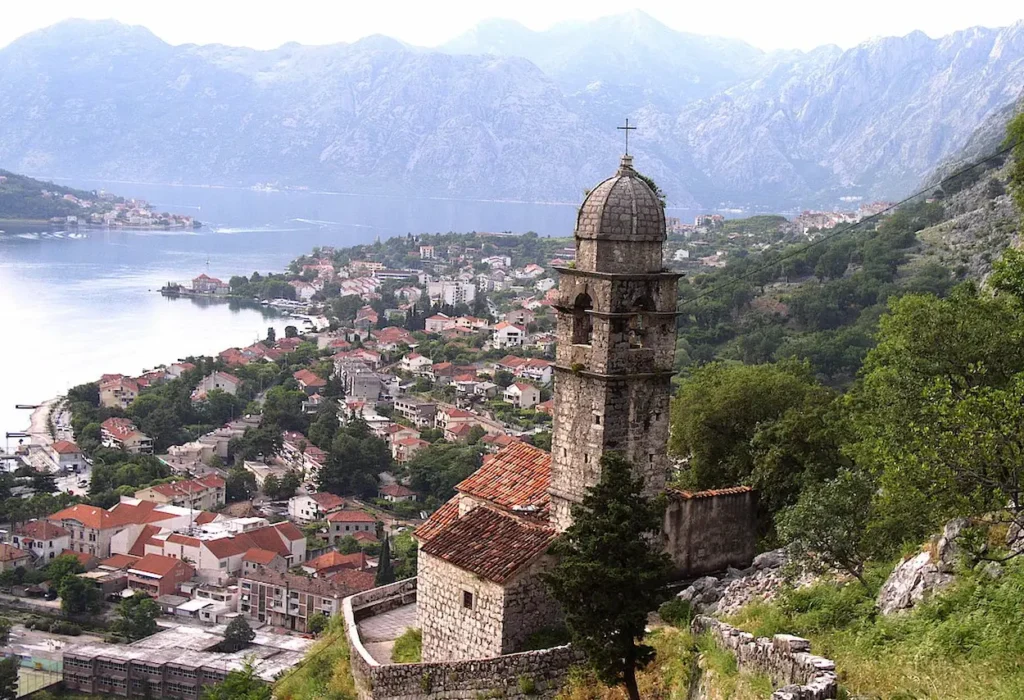
Many of the city’s top attractions, such as the Kotor Fortress, are either free or charge minimal entrance fees. Walking the city walls offers stunning views of the Bay of Kotor and costs around 8 euros – it’s definitely worth it for the panoramic views and photo opportunities.
Nature lovers can enjoy hiking trails in the surrounding mountains or visit the nearby Lovcen National Park for a moderate fee. Outdoor activities like hiking, swimming, and exploring nearby beaches are mostly free or very low-cost.
I found accommodation outside the historical center during peak season significantly cheaper – you can get decent places for $25-35 per night. Public transport around the area is inexpensive, and you can take advantage of budget bus connections to other Balkan destinations.
The local markets are great for cost-saving meals and fresh produce.
23. Plovdiv, Bulgaria
Plovdiv is one of the oldest cities in Europe and a fantastic budget-friendly destination in Bulgaria. The city has this amazing mix of Roman ruins, Ottoman-era mosques, Orthodox churches, and 19th-century mansions all within walking distance. Plus, it was recently the European Capital of Culture, so there’s always something cultural happening at very reasonable prices.
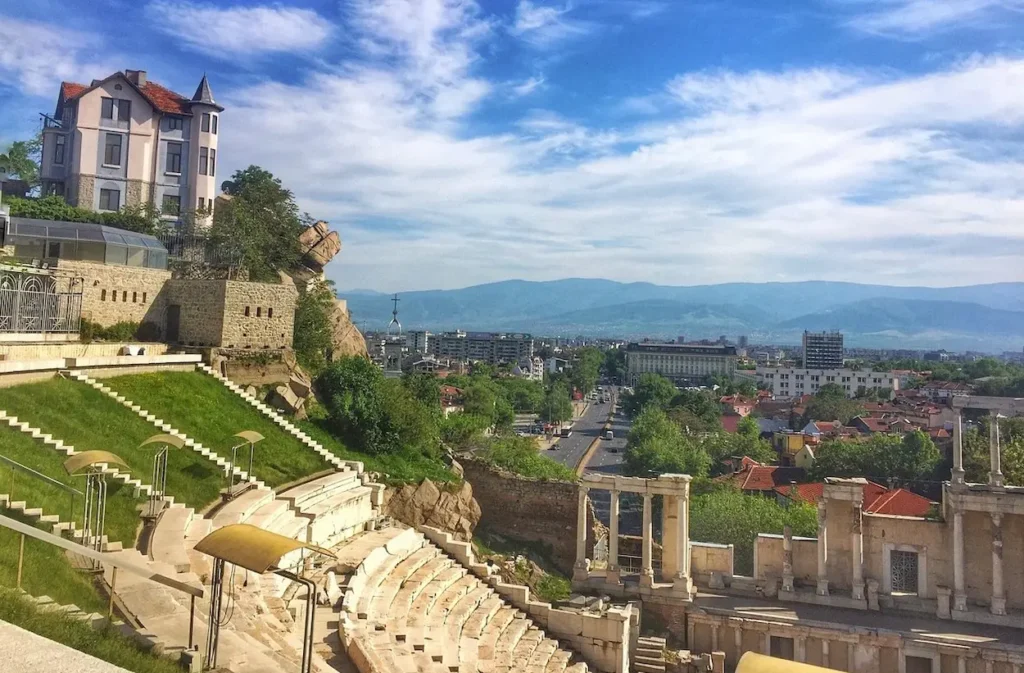
I spent three days in Plovdiv and honestly could’ve stayed longer. You can do a lot for free here, especially if you like walking around historic city centers and soaking up ancient atmosphere. The Roman Theater is incredibly well-preserved and either free or costs just a couple euros depending on events. The Nebet Tepe archaeological site gives you great views over the city and costs nothing to explore.
The Old Town (called Plovdiv’s Old Quarter) is absolutely gorgeous with its colorful 19th-century houses built right on top of ancient Roman ruins. You can spend hours just wandering the cobblestone streets and admiring the traditional Bulgarian Revival architecture – all completely free.
Local markets and street food vendors offer delicious and affordable dining options. I consistently found meals for $3-6, which is incredible value. The Plovdiv Regional Ethnographic Museum is housed in a beautiful Renaissance building and costs around 4 leva ($2) to enter – totally worth it for the cultural insights.
Plovdiv is compact and walkable, so no transport costs within the city center. Public transportation is super cheap when you need it – under $1 per ride. I stayed in a great hostel for about $18 per night, and even nicer accommodation rarely exceeds $35-40.
- Read also: My Favorite Hidden Spots in Europe

Additional Ways to Save On European Travels
In addition to choosing the cheapest cities in Europe to visit, there are many other effective ways to save money on your trip. I’ve written an article that delves into these strategies further, although here are a few helpful pointers:
- Learn how to discover the best flight deals: As mentioned above, I highly recommend using Going’s free email service to save big on airfare. Sites like Skyscanner give you the option to filter on the cheapest flights anywhere in the world. Sharing my travel hacks for flying (tips to save time, money + hassle, and the cheapest places to fly into Europe.
- Save big on the baggage fees: Whenever possible, leave the suitcase at home and instead bring a carry-on bag. Packing like a minimalist is the best way to save cash!
- Take advantage of promo codes: If you haven’t used Airbnb before, use my code and get up to $55 off your first booking. You can also use my Booking.com code to earn a $25 cash reward.
- Book in advance: Try booking a few months ahead and be flexible with your travel dates. With this, consider traveling during the off-season for lower prices.
- Stay in hostels or budget accommodations: You don’t need to stay in luxury hotels to have a good time (in fact, I recommend against this, especially for budget-travel!).
- Eat like a local and avoid tourist hotspots: There’s amazing and cheap food all around these cities, so don’t go to the first place listed on Yelp. Instead, ask locals where they like to eat.
- Use public transportation instead of taxis: Taxis and Ubers will add up quickly.
- Take advantage of free walking tours and activities: This is one of the best ways to experience the city you’re in!




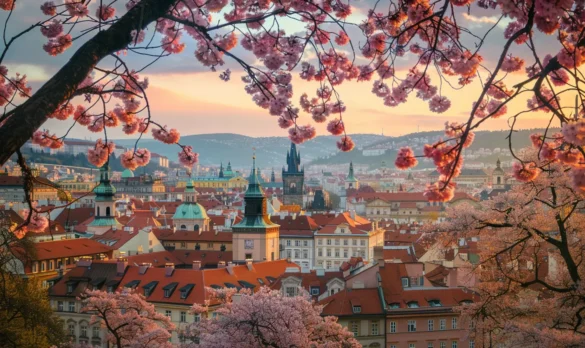

2 comments
Awesome article and information! I always wanted to check out Budapest and Prague! I passed through Bologna during my time in Italy, and it’s absolutely beautiful.
Glad you enjoyed reading it! I’m happy to hear this article sparked your interest to visit those two cities. Happy Travels!